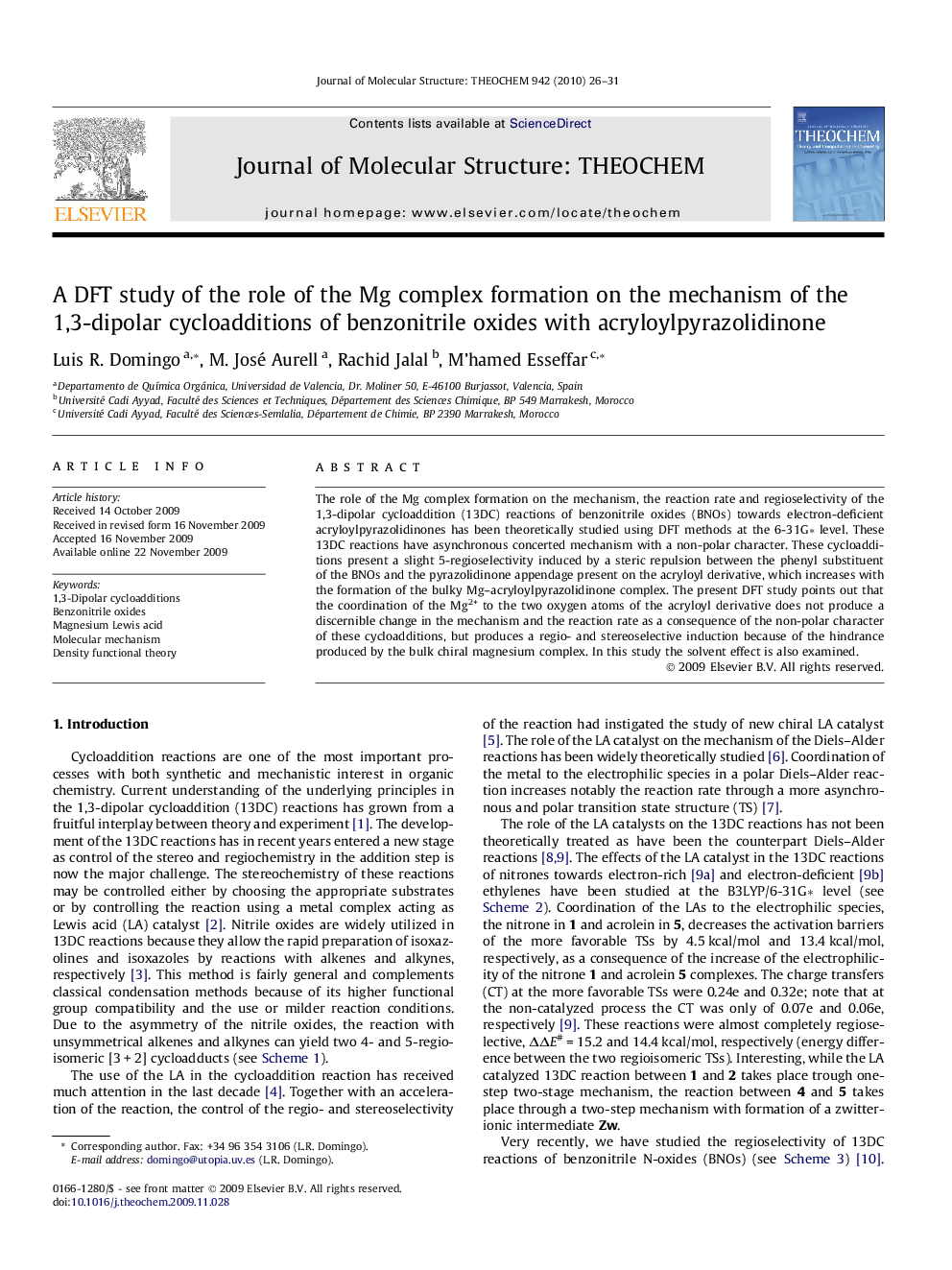| Article ID | Journal | Published Year | Pages | File Type |
|---|---|---|---|---|
| 5416625 | Journal of Molecular Structure: THEOCHEM | 2010 | 6 Pages |
Abstract
The role of the Mg complex formation on the mechanism, the reaction rate and regioselectivity of the 1,3-dipolar cycloaddition (13DC) reactions of benzonitrile oxides (BNOs) towards electron-deficient acryloylpyrazolidinones has been theoretically studied using DFT methods at the 6-31G* level. These 13DC reactions have asynchronous concerted mechanism with a non-polar character. These cycloadditions present a slight 5-regioselectivity induced by a steric repulsion between the phenyl substituent of the BNOs and the pyrazolidinone appendage present on the acryloyl derivative, which increases with the formation of the bulky Mg-acryloylpyrazolidinone complex. The present DFT study points out that the coordination of the Mg2+ to the two oxygen atoms of the acryloyl derivative does not produce a discernible change in the mechanism and the reaction rate as a consequence of the non-polar character of these cycloadditions, but produces a regio- and stereoselective induction because of the hindrance produced by the bulk chiral magnesium complex. In this study the solvent effect is also examined.
Related Topics
Physical Sciences and Engineering
Chemistry
Physical and Theoretical Chemistry
Authors
Luis R. Domingo, M. José Aurell, Rachid Jalal, M'hamed Esseffar,
